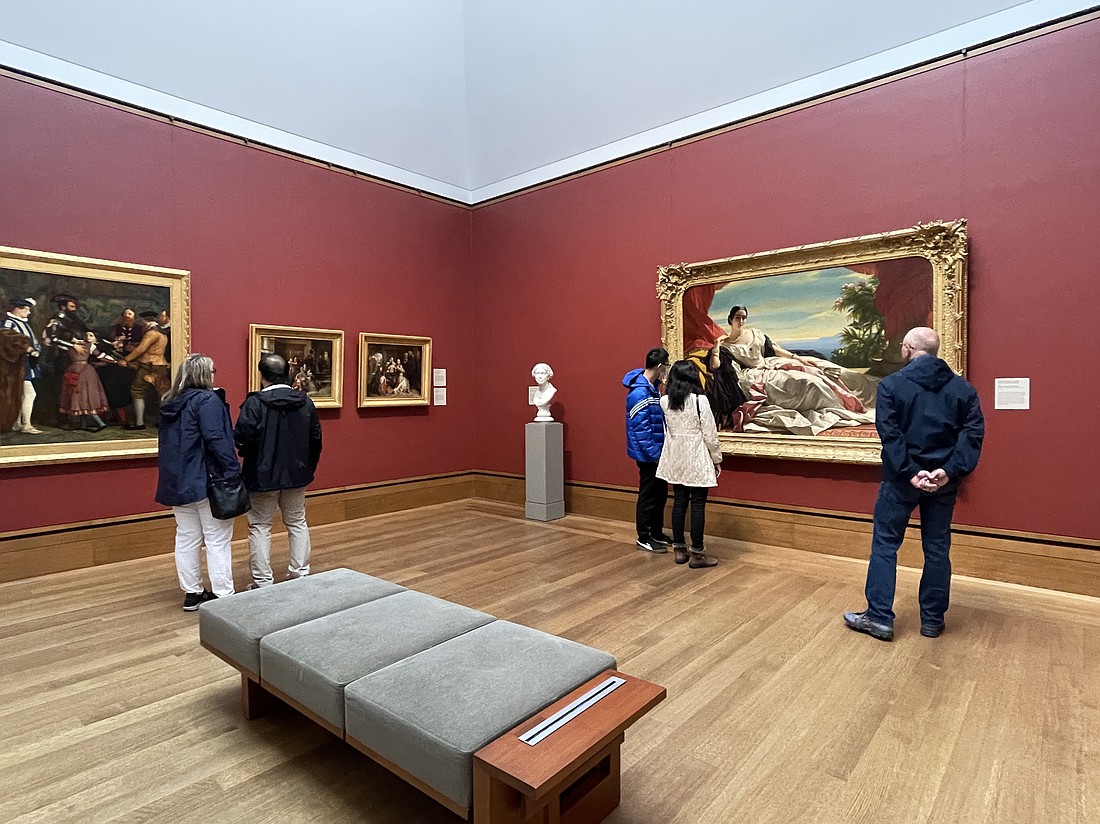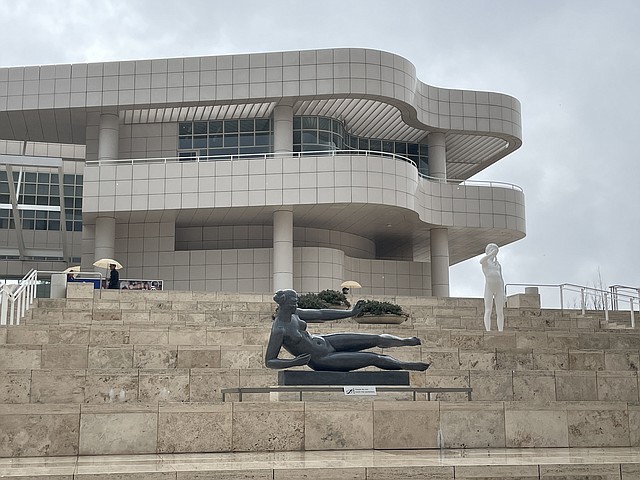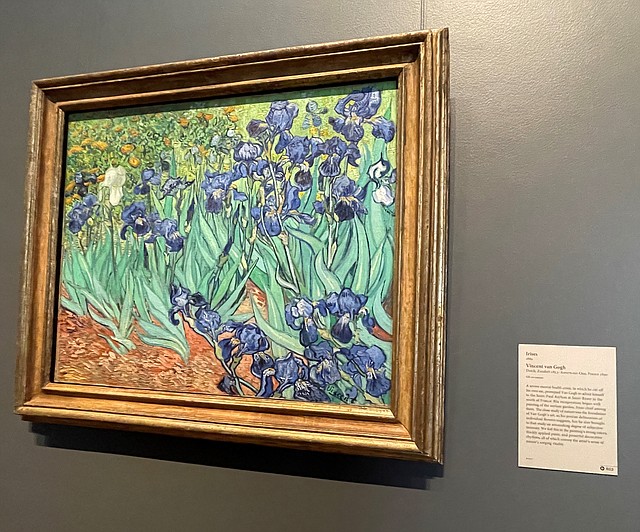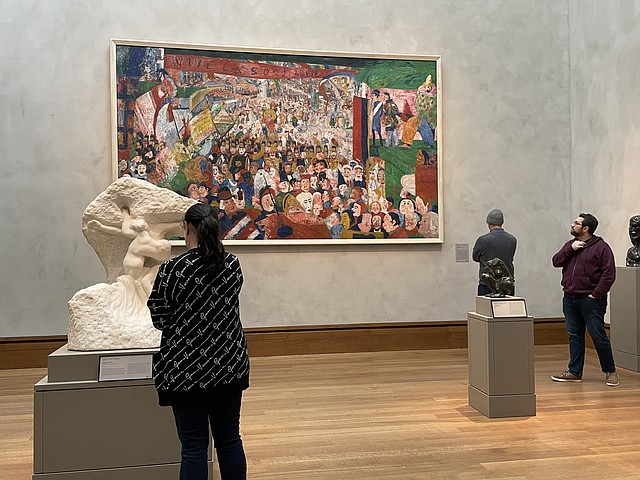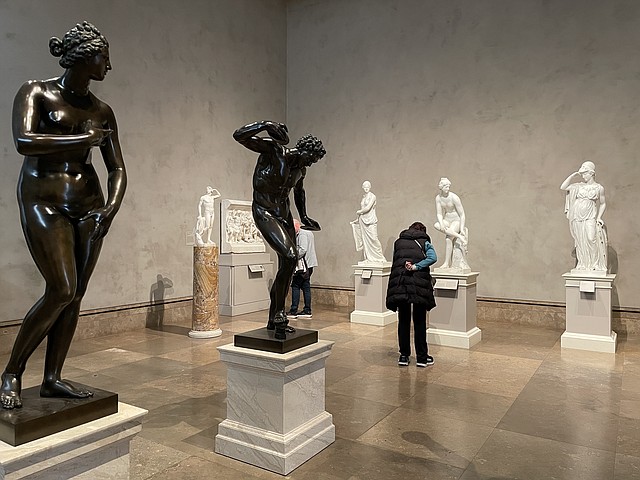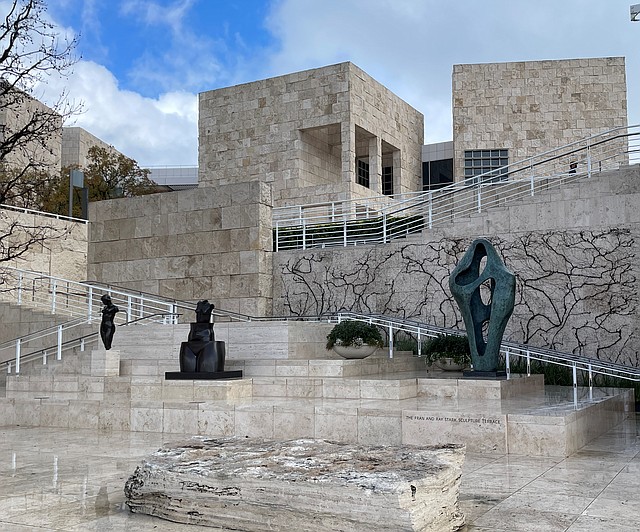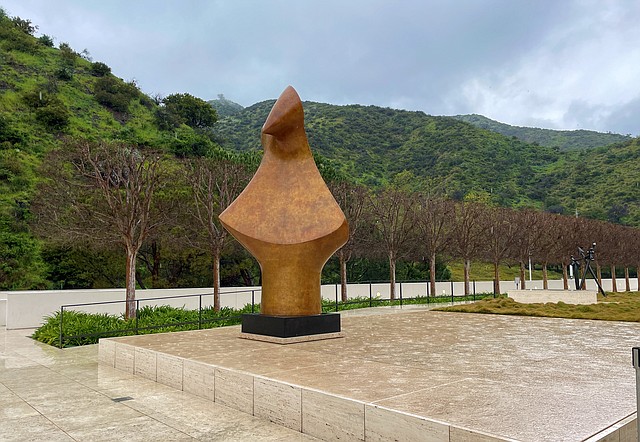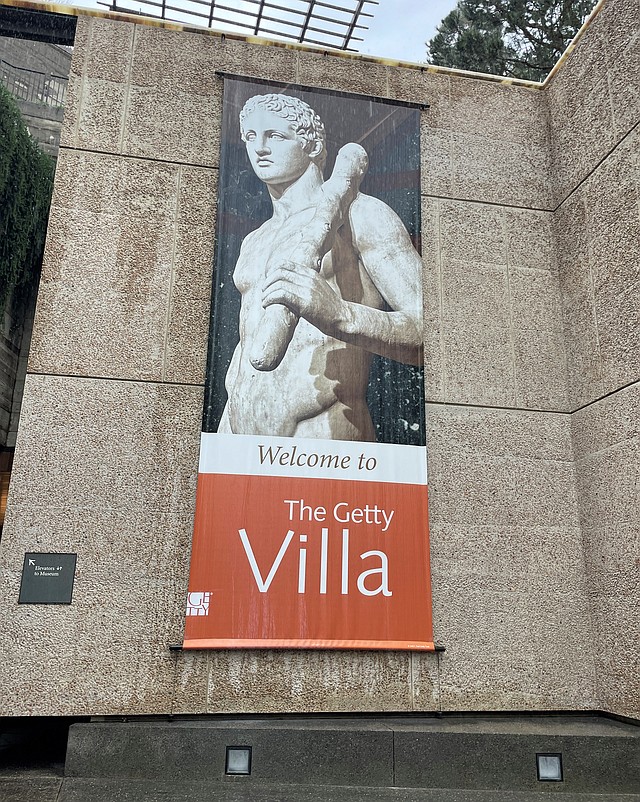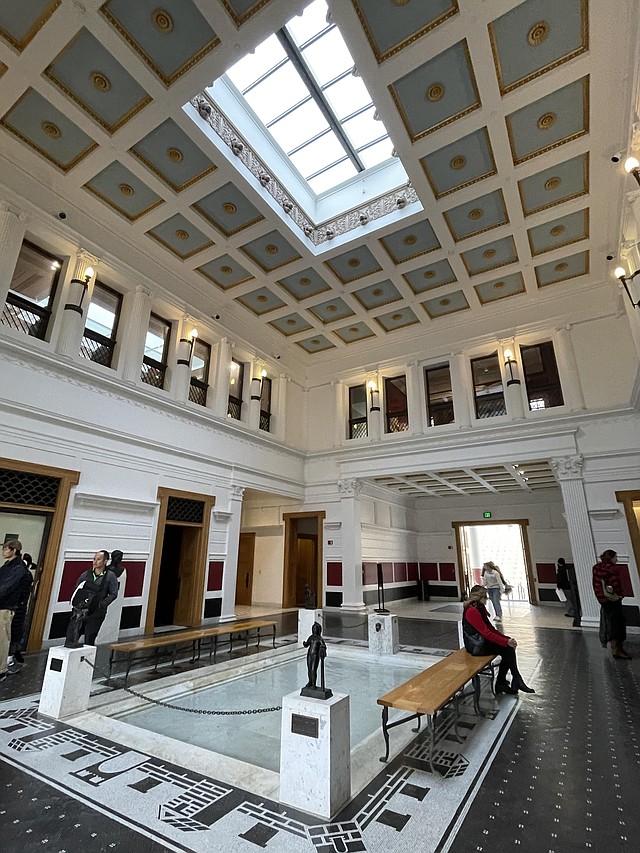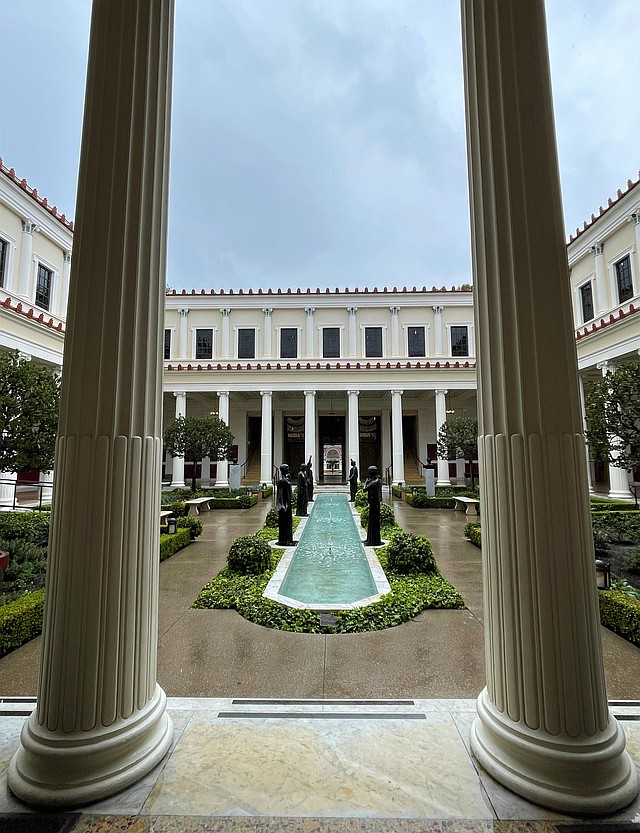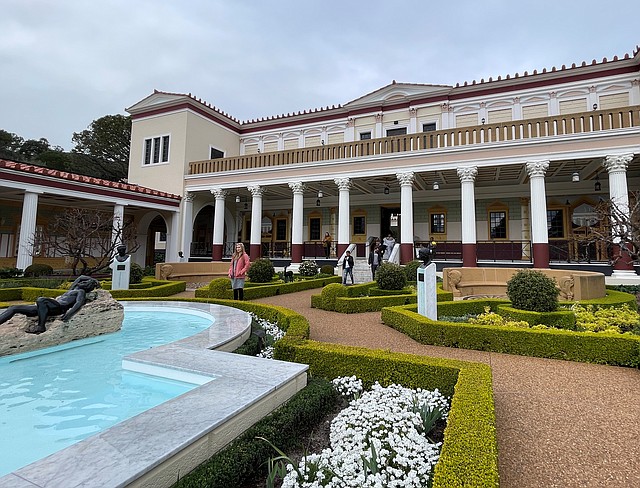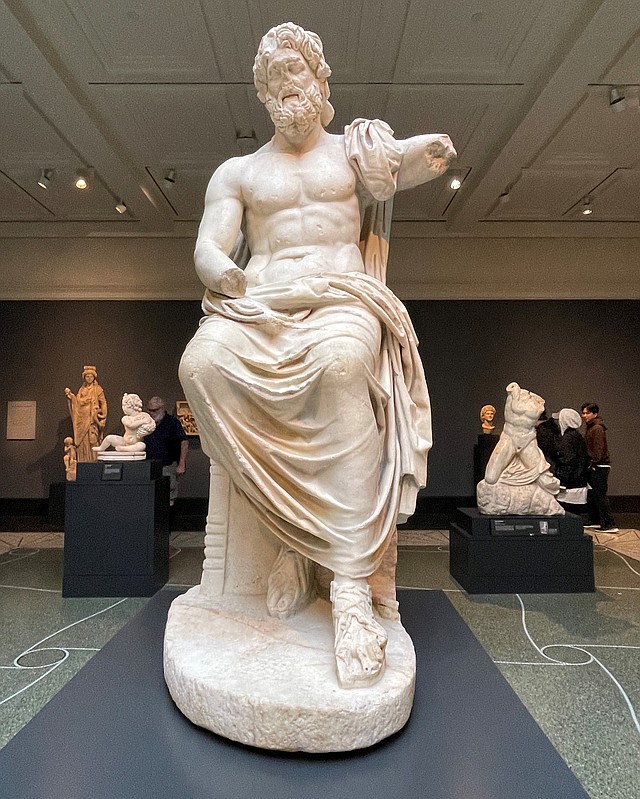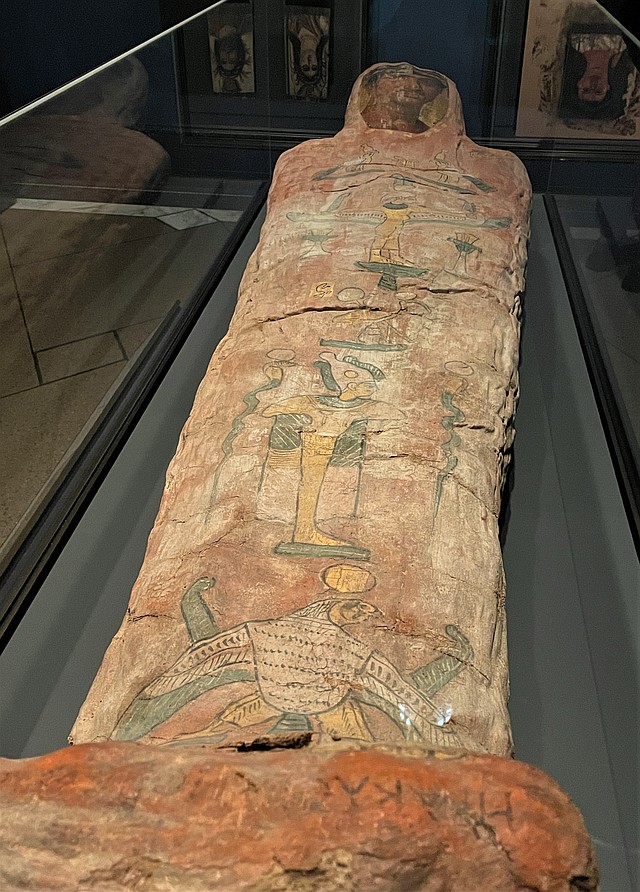The Getty Center is one of the top attractions in Southern California and belongs on your short list of things to do when you’re in Los Angeles. More than a museum with an exceptional art collection, the Center is a beautiful public park with views of the city’s skyline, as well as the surrounding mountains.
We have oil magnate J. Paul Getty, one of the wealthiest Americans in history, to thank for this special place and for the fact that it operates free of charge thanks to the J. Paul Getty Trust. Getty, a lifetime art collector, viewed art as a civilizing influence in society. He took steps to make art available for the public’s education and enjoyment and the Center is his legacy.
When Getty died in 1976, most of his personal estate passed to the Trust in subsequent years and the Trustees sought to expand the museum he had started in his home in Malibu back in the 1950s. The Getty Villa opened in 1974 (more on this later) and when it became too small to house the vastly growing collection, the Getty Center was built. Opening in 1997 to critical acclaim, the museum is the world’s largest cultural and philanthropic institution dedicated to the visual arts.
Designed by renowned architect Richard Meier, the Center is one of the most impressive architectural achievements in the U.S. Sitting on a hilltop in the Santa Monica Mountains, this majestic circular structure is covered in Italian travertine – 16,000 tons and 1.2 million square feet to be exact! The soft honey tones of the stone catch the light and emit warmth, offering a welcoming beacon to visitors.Curved design elements and several gardens break up the grid-like squares of stone. Walls of glass bring the natural light in, illuminating the interiors.
Getting to the museum is part of the fun, as you’ll take a monorail from the parking lot to the Tram Arrival Plaza House. The approach is a la Disney, where arriving is an experience in itself.Inside, you’ll find everything from Renaissance and European paintings to 20th century American photographs, historic manuscripts, sculptures and decorative arts from around the world.
There are four main pavilions that mark the galleries. In the North Pavilion, you’ll find Medieval and Renaissance sculpture and decorative arts. In the East Pavilion, sculpture and Italian decorative arts from 1600 to 1800 take centerstage. The South Pavilion has French decorative arts, including ornately furnished paneled rooms. And the West features sculpture and decorative arts of the 1700s and 1800s, along with 19th-century paintings and changing exhibitions of drawings and photographs.
The highlights of the collection are mostly in the West Pavilion. Here you’ll find iconic paintings by masters Van Gogh, Manet, Monet, Degas, Renoir, Turner, Rubens and Rembrandt.
Don’t forget to spend some time in the gardens. There are four of them, one at street level and the rest at the top of the hill. The Central Garden, which is at the heart of the Center has sculptures that change with the seasons. And it boasts more than 500 varieties of plant material plus such charming enhancements including a stream, stone waterfall and bougainvillea trellises for a sensory treat.The Cactus Garden is full of cacti, succulents and other desert plants, and is an ideal place to take in the panoramic vistas of Los Angeles; whereas, the Lower Terrace Sculpture Garden showcases sculptures by modern artists.
Check out The Fran and Ray Stark Sculpture Terrace for such notable pieces as Barbara Hepworth’s “Figure for Landscape” and Henry Moore’s “Seated Woman,” among others.
Located at the foot of the hill is The Fran and Ray Stark Sculpture Garden where Joan Miró’s “Figure,” Henry Moore’s “Bronze Form” and “Draped Reclining Mother and Baby,” and Elisabeth Frink’s “Horse” and “Running Man” are on display.
Most people know about the Getty Center, but they are less familiar with the Getty Villa. Though smaller than its famous sibling, the Villa is a unique museum, offering a complementary experience to the Center.The drive from the Getty Center in Brentwood to the Getty Villa in Pacific Palisades will take you about thirty minutes depending on L.A. traffic. Whereas the Center is up in the hills, the Villa is near the ocean. When you pay for parking at the Center, you can get a voucher for free parking at the Villa. Admission to the Villa is also free.
As with the Getty Center, you’ll discover that architecture and outdoor areas play an important role at the Villa. J. Paul Getty wanted the museum to be a building that would suit his vast collection of Classical and Renaissance-era artworks. To accommodate this request, the architects modeled the Villa after Herculaneum’s Villa de Papiri, a first-century Roman country house, which was later buried by the eruption of Mt. Vesuvius. Due to the fact much of the original villa remains unexcavated, the architects looked at elements from other ancient Roman houses for design details.
The result is a grand, two-story mega mansion with Doric and Corinthian columns, complete with an eye-catching landscaped courtyard, four gardens, reflecting pool, frescoes and bronze statues. And of course there’s an expansive view of the ocean. The structures blend thoughtfully into the terrain and the Mediterranean design fits in well with the coastal location.
The four Roman-inspired gardens are bedecked with plants known to have grown in ancient Mediterranean. In the Herb Garden, for example, you’ll find familiar herbs used in cooking, including mint, basil, thyme and sage, as the Romans valued their kitchen gardens. Plants were grown not only for food and seasonings for cooking, but also for their color, fragrance and medicinal properties.
An inner courtyard garden is lined with columns and features decorative marble floors, walls and ceilings. Statues of young women surround a small pool in the center. Take the time to soak up the atmosphere at one of the nearby benches.The East Garden is a tranquil spot that offers much needed shade in the often warm and sunny L.A. climate. Sit and enjoy the sounds of splashing water from the fountains, which are adorned by mosaics and framed by theatrical masks.
Inside, the galleries echo the exterior opulence with beautiful stone walls, painted ceilings and gleaming terrazzo floors. There are over 1,000 antiquities on display, including coins, jewelry, household wares, statues and more.The first floor is dedicated to Greek art from the Neolithic and Bronze Age to the Hellenistic period. Some of the museum’s oldest and rarest objects are located here. On the second floor, works of art from the Roman Empire take centerstage with a range of sculpture, jewelry, glassware, mummy portraits and more.
Death seems to be a prominent theme at the Villa, as you can imagine, with all the Greek and Roman mythology. “Statues of Two Sirens,” for example, deals with the song of the Sirens, which lured sailors in Homer’s “Odyssey” to crash and die on rocks. “Kylix with the Suicide of Ajax” is a wine-drinking cup, depicting Greek warrior Ajax, who has fallen on his own sword after losing out on a prize he deserved. “Sarcophagus with the Moon Coming to Her Lover” focuses on the moon goddess, Selene, who keeps her youthful lover Endymion asleep forever so he won’t age and die. A young Roman is mummified with another smaller mummy in “Mummy of Herakleides,” while nearby is “Mummy Portrait of Isidora.”
Debbie Stone is an established travel writer and columnist, who crosses the globe in search of unique destinations and experiences to share with her readers and listeners. She’s an avid explorer who welcomes new opportunities to increase awareness and enthusiasm for places, culture, food, history, nature, outdoor adventure, wellness and more. Her travels have taken her to nearly 100 countries spanning all seven continents, and her stories appear in numerous print and digital publications.
